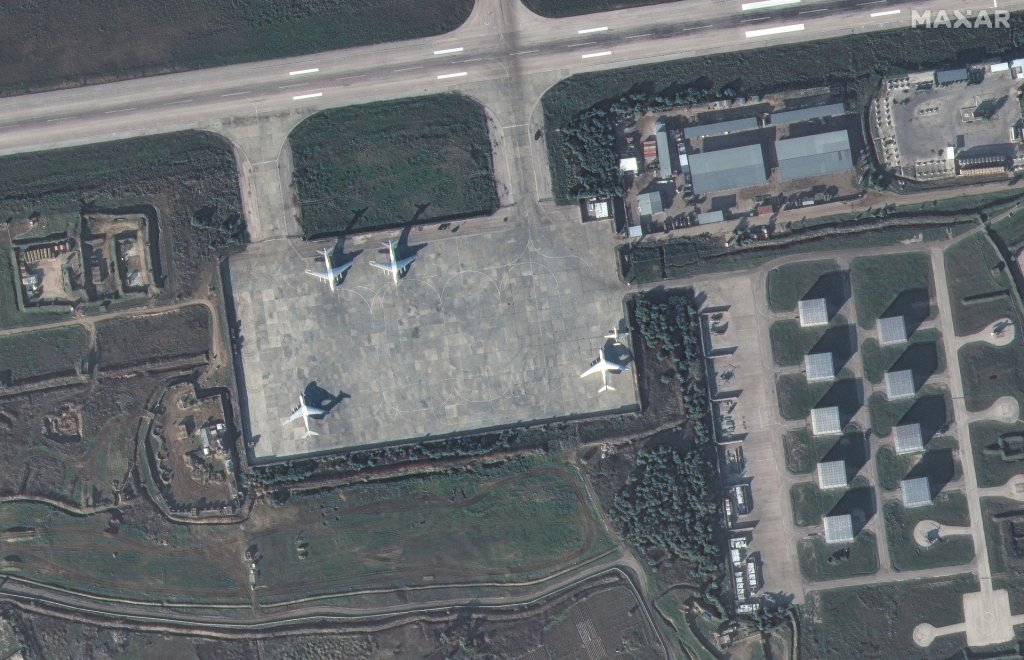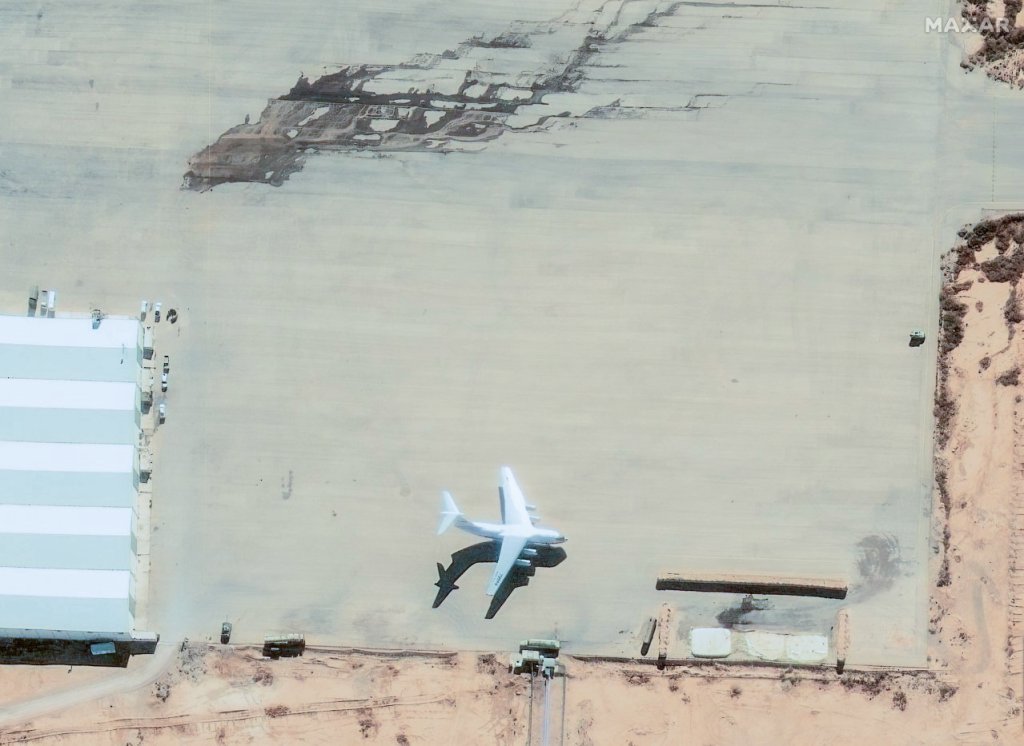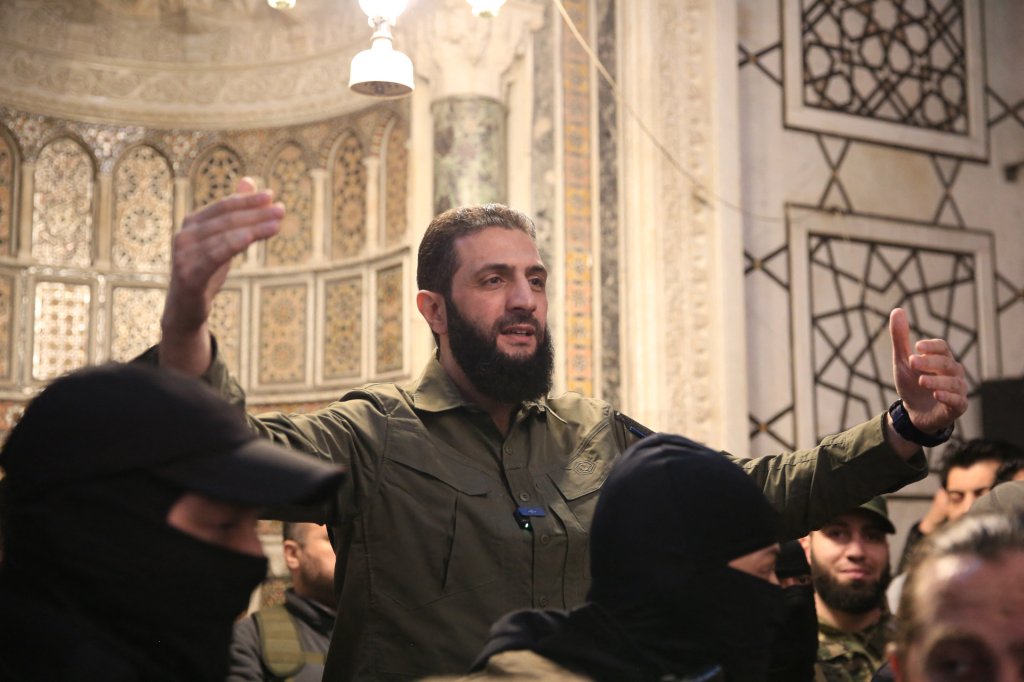Russian President Vladimir Putin insisted today that his country is still exploring its options for retaining a pair of bases in Syria that have uniquely strategic value following the fall of longtime ally Bashar Al Assad. The new remarks stand at odds with Russia’s drawdown of military forces and materiel in the Middle Eastern country already and there are clear signs this week that those departures are only ramping up. You can read more about what has already been observed at Russia’s Khmeimim Air Base and Tartus naval base in The War Zone‘s past reporting here.

Putin talked about Syria and a host of other topics in a freewheeling annual televised end-of-year press conference earlier today.
“We maintain relations with all the groups that control the situation there [in Syria], with all the countries in the region,” the Russian president said. “The overwhelming majority of them tell us that they would be interested in our military bases remaining in Syria.”
Putin did not offer any additional information to substantiate the latter assertion.
“I don’t know, we have to think about it [Khmeimim and Tartus], because we have to decide for ourselves how our relations will develop with those political forces that now control and will control the situation in this country [Syria] in the future,” Putin added. “Our interests must coincide.”
“If we stay there, it means we must do something in the interests of the country where we are,” he continued. “What the interests will be, what we can do for them – this is a question that awaits painstaking study from both sides.”
“You want to portray everything that is happening in Syria as some kind of failure, a defeat for Russia. I assure you, it is not. And I’ll tell you why,” Putin declared at one point. “We came to Syria 10 years ago to prevent a terrorist enclave from being created there.”
“On the whole, we have achieved our goal. It is not for nothing that today many European countries and the United States want to establish relations with them,” he continued. “If they are terrorist organizations, why are you [the West] going there? So that means they have changed.”
Many countries, including the United States, have been in contact with Hay’at Tahrir al-Sham (HTS), which headed the rebel coalition that ousted Assad, in the past few weeks. HTS is now working to form a transitional government in Damascus. At the same time, the U.S. government, as well as that of Russia, among others, still formally designates HTS as a terrorist organization. American authorities have a $10 million bounty out on HTS leader Ahmed Hussein Al Shar’a, better known by his nom de guerre Abu Mohammad Al Jolani (or simply as Jolani). Russia was actively fighting anti-regime rebels, including HTS, just two weeks ago.
In addition, Putin today tried to downplay Russia’s extensive military presence in Syria and any culpability for Assad’s fall. Instead, he blamed the poor performance of Assad’s armed forces and its Iranian allies for the rapid collapse of the regime. Russia’s president claimed that his country had helped some 4,000 Iranian personnel evacuate the country via Khmeimim. Putin also added that he had not met with Assad since the former Syrian dictator reportedly arrived in Moscow nearly two weeks ago. The deposed Syrian leader has not been seen in public for weeks now.
Overall, Putin’s comments at the press conference today strain credulity. The fall of Assad has been a huge blow to the Kremlin with ramifications well beyond the Middle East. This includes the fate of Khmeimim and Tartus, which have provided the Russians with highly strategic nodes for projecting air and naval power out in the Mediterranean, including along NATO’s southern flank, and into Africa. The Russian intervention in Syria beginning in 2015 was absolutely critical for both propping up Assad’s regime and maintaining access to those facilities. Assad essentially gifted those bases to Russia through a 49-year ‘lease’ deal in 2017, and the Kremlin has invested significant resources in expanding them since then.
Al Monitor reported today, citing anonymous Russian diplomatic sources, that a final decision about Khmeimim and Tartus could come next March. The New Arab reported earlier this week, again citing anonymous sources, that Russia’s military could be ordered out of the country entirely within a month. Previous reports have also suggested that negotiations between Russian authorities and the rebels so far have centered on humanitarian and economic assistance, as well as questions about diplomatic ties.
Satellite imagery, along with pictures and videos from sources on the ground, have shown Russian forces, including an S-400 surface-to-air missile system and other key air defense assets, already withdrawing Khmeimim. Materiel and personnel are also massing at the air base, as well as at Tartus, pointing to plans for more significant drawdowns to come.

The video of Khmeimim seen below, shot using a drone, emerged last week and had already showed evidence of the S-400 system and other Russian assets being withdrawn.
Russian naval vessels left Tartus days ago, but have been holding off shore where they are less vulnerable, but could also support future withdrawal operations. A picture has now emerged, seen below, said to show the Russian Navy frigate Admiral Grigorovich refueling via a tanker ship off the Syrian coast in order to maintain its station.
“It appears to us that they’re [the Russians] taking the steps that would be necessary if they were planning to retrograde their forces,” a senior U.S. defense official told The War Zone and other outlets earlier this week. “We don’t know if they’ve reached the decision to do that, or if they are in discussions on whether they need to do that or not, but that force consolidation that would enable them to depart has certainly happened.”
There are growing reports that Russian forces from Syria are relocating, at least initially, to bases in Libya, which would be a logical development.
“Russian cargo planes have flown air-defense equipment, including radars for S-400 and S-300 interceptor systems, from Syria to bases in eastern Libya,” according to a report just yesterday from The Wall Street Journal, citing anonymous U.S. and Libyan officials. “Russia has also flown troops, military aircraft, and weaponry out of Syria in a significant drawdown of its presence there.”
The Journal did not name the bases in question. The War Zone has reviewed satellite imagery from Maxar and Planet Labs that look to show Russian movements at Al Jufra Air Base, Al Khadim Air Base, Al Qardabiyah Air Base, and Benina International Airport. However, these are facilities that Russia’s military has been operating from for years now and it is still unclear whether what is being seen represents a significant uptick in activity.


Russia has a long relationship now with Libyan strongman Khalifa Haftar, whose Libyan National Army (LNA) controls much of the eastern end of the country. At the same time, Haftar has complicated ties with U.S. authorities, who he has met with very publicly this year, and who could seek now to pressure him more to move away from Moscow’s orbit.
American and other Western officials also continue to pressure Sudanese authorities to refuse to host Russian forces, according to a recent report from The Moscow Times, citing an anonymous intelligence official in that country. The Kremlin has sought to establish a naval base in Sudan in the past.
Syria otherwise continues to be in the midst of major geopolitical flux following the collapse of the former regime. While HTS is working to craft a new government in Damascus, much of the country remains under the control of various other internal and external actors, including Israel, the United States, and Turkey. U.S. and Israeli forces have also been striking targets across the country, aimed at preventing ISIS and other terrorist groups from capitalizing on the situation and former regime assets falling into rebel hands, respectively. In addition, there has been a notable surge in fighting between Turkish-supported rebels and U.S.-backed Kurdish forces in northeastern Syria, and there are fears a larger Turkish intervention could be imminent despite an American-brokered ceasefire.
For its part, HTS, which evolved from an Al Qaeda franchise in Syria, has sought to address concerns that it might try to establish an extremist Islamist state. “In Syria, we spoke with all the communities, the Druze, who fought alongside us, the Christians, the Alawites, and the Kurds,” Jolani told foreign journalists earlier this week.
“Now, after all that has happened, sanctions must be lifted because they were targeted at the old regime,” Jolani also said in a separate interview with the BBC. “The victim and the oppressor should not be treated in the same way.”
Jolani “tried to offer reassurance to all those who believe his group has not broken with its extremist past” but “many Syrians do not believe him,” the BBC piece noted.

When it comes to Khmeimim and Tartus in Syria, Putin’s comments today notwithstanding, Russia is clearly at least drastically scaling back its military presence in the country and signs are still growing that it could be moving to pull out for good.
Contact the author: joe@twz.com
